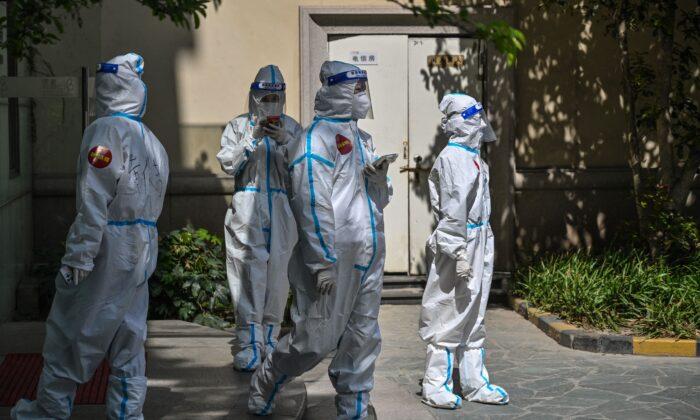In China the birth defect rate has jumped from 8.77 per 1,000 in 1996, to 15 per 1,000 in 2010, according to Report on Women and Children’s Health Development published on Sept. 21. Experts attributed the 70.9 percent surge to environmental pollution.
According to the Jinghua Times, the top five inborn defects in hospital tests in 2010 were congenital heart disease, extra toes or fingers, cleft palate, congenital hydrocephalus (“water in the brain”), and neural tube defect (exposure of the brain or spinal cord at birth); congenital heart disease was ranked number one.
Li Senkai, former deputy director of Cosmetic Surgery of the Chinese Academy of Medical Sciences, said food pollution is the primary cause of cleft palates and penile hypospadias (an unnatural development of the penis).
When manufacturers of animal feed add estrogen, the ultimate victims are newborns.
Mr. Chen, a pediatric expert from Jinan, Shandong Province, told The Epoch Times that in recent years the rate of deformity among newborns has risen significantly. Chen believes the main reasons are changes in the environment, climate, and food contamination.
Environmental factors include chronic air pollution, contaminated milk and adulterated products like “gutter oil,” which lead to long term toxicity—which is difficult to detect without an outbreak. “Toxins are everywhere and impossible to avoid. Since we cannot change the overall environment, we can only try to protect ourselves,” he said.
According to recent reports, Shanxi has the highest rate of birth defects, especially for neural tube deformation, which is found in more than 1 percent of all newborns. This is four times the national average. Research by local health officials indicates that newborn defects correlates with environmental pollution: for instance, the rate of neural tube defects is 3-4 per 100 newborns near iron and coal mines.
Yangcheng Evening News reported that birth defect rates in nine cities in the Zhu River Delta is as high as 2.82 percent, four times that of nearby cities. This figure is twice that of the rate 10 years ago and 50 percent higher than the national average. Health officials from Dongguan believe that increased environmental pollution, drug abuse, and better data collection have all contributed to higher reported birth defect rates in Dongguan.
In Hunan Province, the birth defect rate has also doubled in the last 10 years. Polluted water and air are believed to be the main culprits. Food contamination is also considered one of the factors.
Ms. Yang, a new mother from Dalian City, Liaoning Province, told reporters that the doctors warned expectant and breast-feeding mothers not to eat seafood after many newborns in the area were born with skin diseases such as red bumps all over the body.
“Here in Dalian, chemical plants are everywhere. Every day they pump pollutants into the air,” she said. “There are negative health effects for babies, for sure. Even if they are not apparent now, in a few years or a dozen years, won’t the harmful effects become more obvious?”
Read the original Chinese article.
[email protected]
Birth Defects in China Jump 70 Percent in 15 Years
In China the birth defect rate has jumped from 8.77 per 1,000 in 1996, to 15 per 1,000 in 2010, according to Report on Women and Children’s Health Development.
By Hong Ning
10/4/2011
Updated: 10/15/2011




Friends Read Free